Is a $22bn giant magnet the ‘holy grail’ of clean energy?
Dozens of nations have staked huge sums – and decades of work – on a nuclear fusion project they hope can play a key role in ending the climate crisis. But is the ITER programme more than a pipe dream? Josh Marcus reports from California

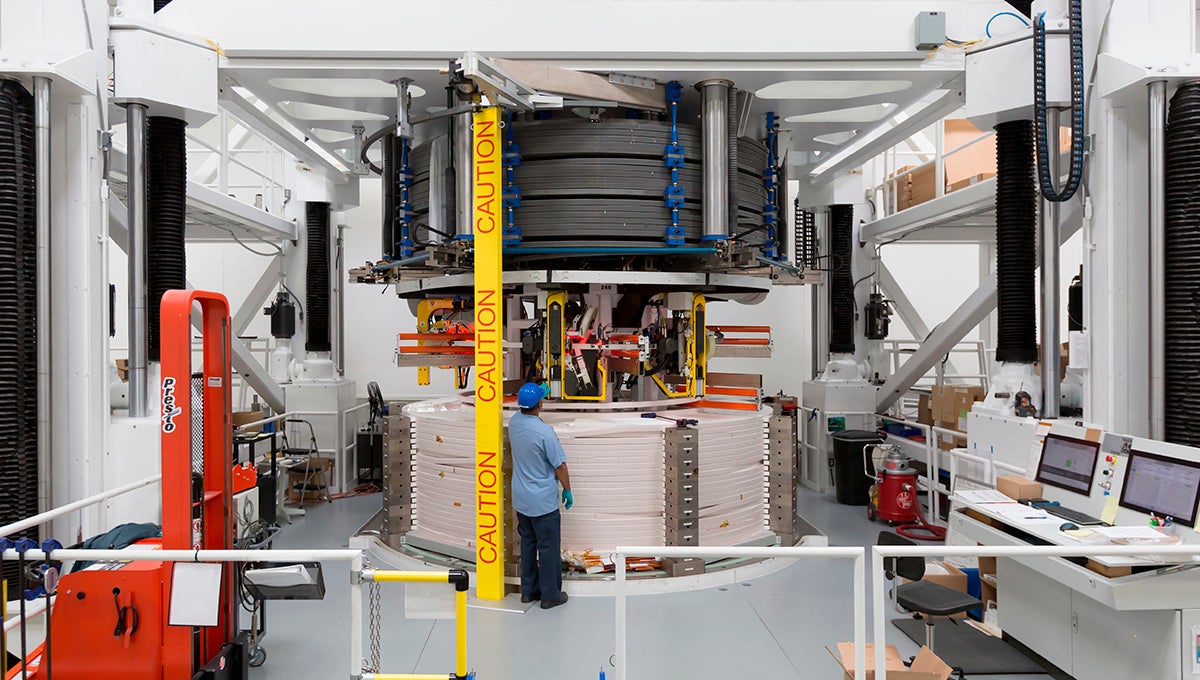
Your support helps us to tell the story
From reproductive rights to climate change to Big Tech, The Independent is on the ground when the story is developing. Whether it's investigating the financials of Elon Musk's pro-Trump PAC or producing our latest documentary, 'The A Word', which shines a light on the American women fighting for reproductive rights, we know how important it is to parse out the facts from the messaging.
At such a critical moment in US history, we need reporters on the ground. Your donation allows us to keep sending journalists to speak to both sides of the story.
The Independent is trusted by Americans across the entire political spectrum. And unlike many other quality news outlets, we choose not to lock Americans out of our reporting and analysis with paywalls. We believe quality journalism should be available to everyone, paid for by those who can afford it.
Your support makes all the difference.At a certain point, even language fails to fully capture all the wild and wondrous things going on inside ITER, a 23,000-tonne, 35-nation nuclear experiment under construction in France.
You could describe ITER – massive as it is – as a miniature. A manmade mini-star on Earth. At its core, plasma will be heated to 150 million degrees Celsius, 10 times the temperature of the core of the sun, hot enough to melt diamonds and rotating faster than the speed of sound, causing hydrogen ions to fuse and release massive amounts of energy.
You could describe ITER – hi-tech as it is – as something of a perestroika relic, the result of an initiative proposed in 1985 by Ronald Reagan and Mikhail Gorbachev. The goal: to collaborate on obtaining a source of nuclear energy that is “essentially inexhaustible, for the benefit for all mankind”.
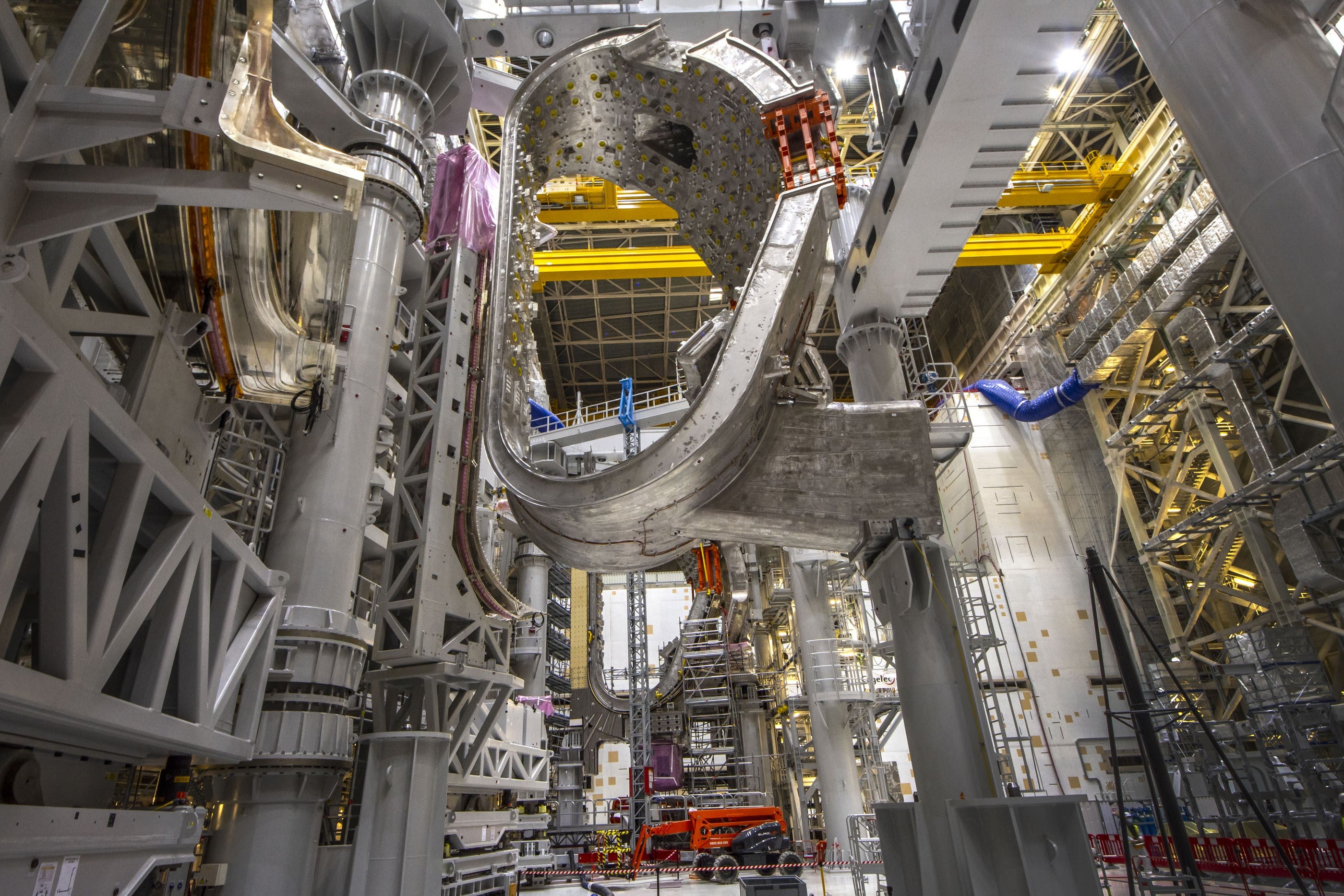
You could describe ITER, as various engineers and experts have, as a giant doughnut-shaped vacuum chamber, using coils of superconducting tin and niobium – akin to a “pile of spaghetti”– to generate an astoundingly powerful magnetic “bottle” containing a “soup” of ions in which fusion occurs, creating the “holy grail” of nuclear reactions.
Or perhaps simplicity is best. ITER means “the way” in Latin. To the nations that back it – members of the European Union, the UK, Switzerland, China, India, Japan, South Korea, Russia and the US – this $22bn (£16.2bn) experiment is a moonshot solution to cut our suicidal reliance on fossil fuels. If ITER works, it will be the first fusion device in history to produce a net energy gain, producing 10 times more power than it needs to function, all without the dangerous waste of its cousin nuclear fission, which powers contemporary nuclear plants. To its critics, ITER is a spectacular waste of time, money, and political clout, at a moment when the planetary clock has nearly run down.
Assembling the largest magnet of its kind
At a quiet commercial park in Poway, California, in the dry hills above San Diego, there are few clues that the future is being built inside a warehouse-like machine workshop. But this is where the central solenoid – the five-storey, 1,000-tonne superconducting electromagnet at the heart of ITER – is being manufactured by General Atomics, a defence and energy contractor better known for making Predator drones.
Entering the building feels like stepping into Tony Stark’s workshop. Brightly coloured gantry cranes tower over components in production, ranging from discs of stacked superconducting wire to magnetic modules inside resin tanks. Vast sheets of opaque plastic hang from the ceiling, cordoning off weld zones. Automated insulating machines, which look like canary yellow film projectors, wind in circles around components, wrapping them in fibreglass. Some parts of the solenoid are so heavy that they need to be moved across the shop floor on a hovercraft. Once the components are all assembled into a towering magnet, the largest of its kind in the world, it will generate a magnetic field strong enough to lift an aircraft carrier.
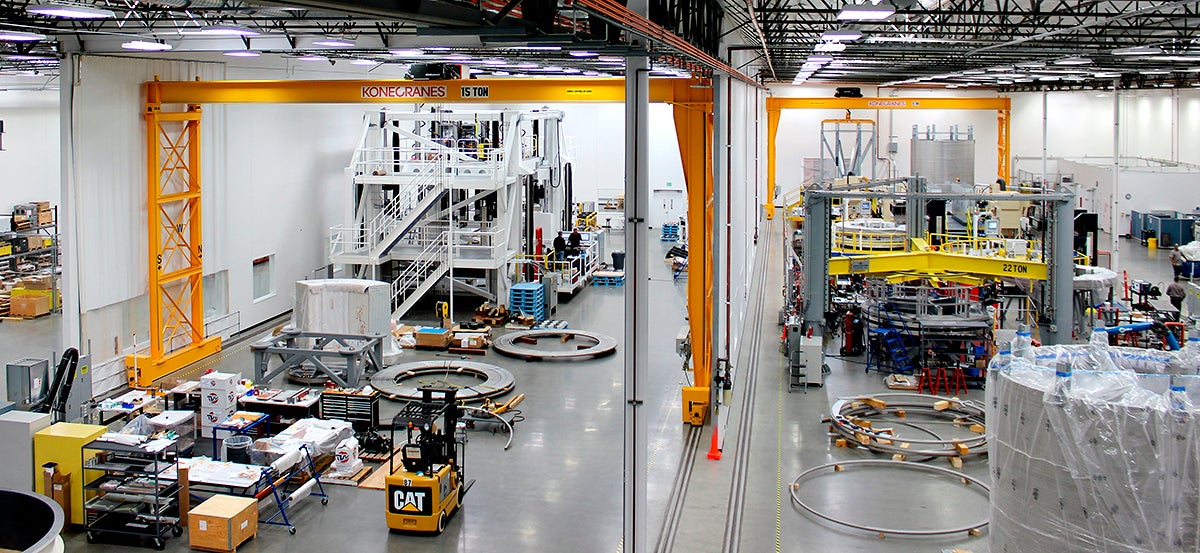
This is all in the service of the greater good, perhaps the greatest good of all in this present moment, according to John Smith, manager of General Atomics’ ITER programme. Without nuclear power alongside renewables, he is doubtful the world can move to a truly sustainable energy system and head off the climate crisis.
“You can say anything you want about renewables right now,” he says during a tour of the facility in October. “In my mind, from what I’ve read and I understand, they cannot replace the carbon cycle. You need another piece of the energy puzzle.”
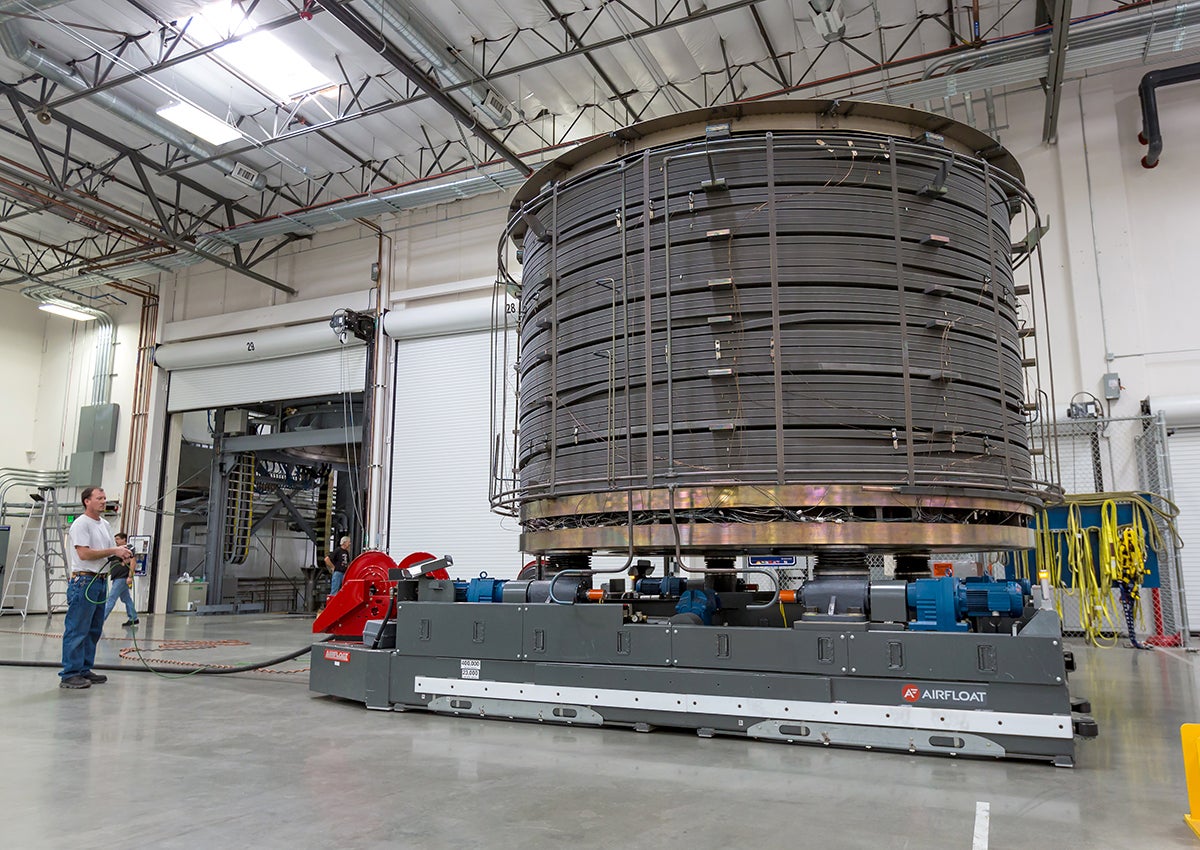
ITER will not run its first experiments until after 2025, and will not attempt full fusion power until 2035, but even getting to this point has been a monumental undertaking.
Take the superconductor at the heart of the solenoid, which creates the magnetic “bottle” that contains the fusion reaction powering this experiment. Each of the six 7ft modules that stack to form the solenoid contains 3.6 miles of tightly wound superconductor cable made from a material called Nb3Sbm. ITER is thought to be using about 10 to 20 times more superconducting material than any other device ever made, and required new factory lines to be set up in Japan to meet its voracious appetite for metal.
As with so many things, this has been complicated by the pandemic – both for the detailed processes that must be done in person and the highly specialised global supply chain.
“The guys that are on the shop floor here have to be here,” says Smith. “A lot of them have families at home or kids at home that were having to be schooled. That was probably the biggest impact on a lot of them, trying to manage life amongst the rest of the stuff that’s going on.

“We’re actually starting to see more effects of it now because of the longer lead times, because the shops are backed up, or they don’t exist any more.”
The nations behind ITER are in constant contact, agreeing – contrary to the global norm – to fully share all the cutting-edge technical details about what they are building. So far, General Atomics has finished three of the seven magnet modules it has planned for the solenoid (six to go inside, plus a backup). Two have already shipped to the ITER site in Saint-Paul-lez-Durance, in southern France, travelling cross-country to Houston, Texas, on a specially designed nine-axle truck, before being shipped to France, with 40 to 60 trucks on site to deliver the components for each module. Plus the paperwork – about 25,000 pages’ worth.
“Some people joked, we were selling 25,000 pages, and we will throw in a coil for free,” Smith says with a grin. “That’s about half true. Being a nuclear device, paperwork is very important for everything you need.”
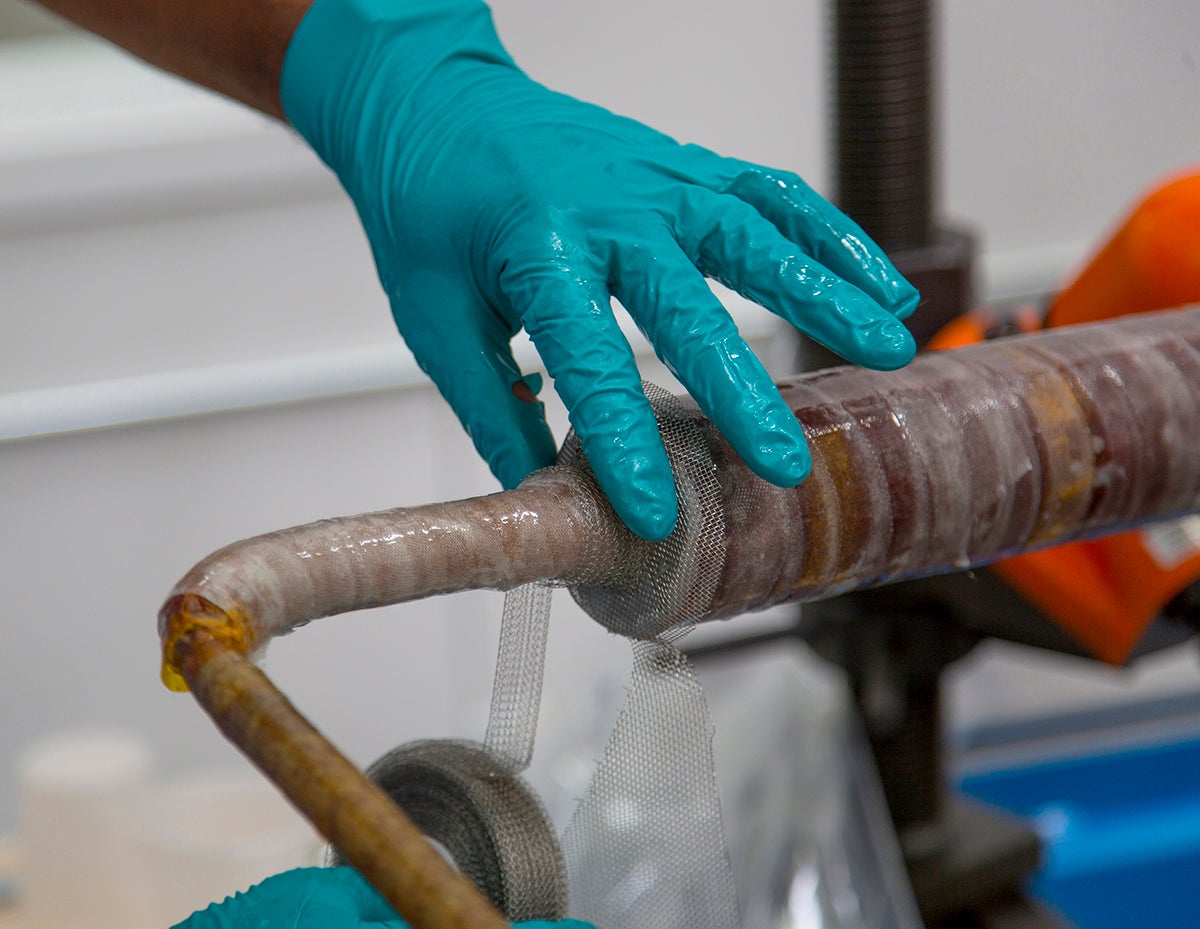
If those 25,000 pages are followed to a T, the ITER project has the chance of achieving what no other fusion experiment has achieved: a condition known as “break-even”, at which point the device will become self-sustaining, throwing off more energy than it takes to start up the reaction inside it.
The ratio of input to output power is measured in what is called a Q value. The most successful fusion experiment ever, the Joint European Torus in Oxfordshire, has achieved a Q value of only 0.67. At a Q value of five, plasma begins to heat itself and continue the fusion reaction. ITER believes it can achieve a Q value of 10, thanks to its unprecedented size, and to using slightly older fusion science that scientists have years of experience refining for maximum productivity.
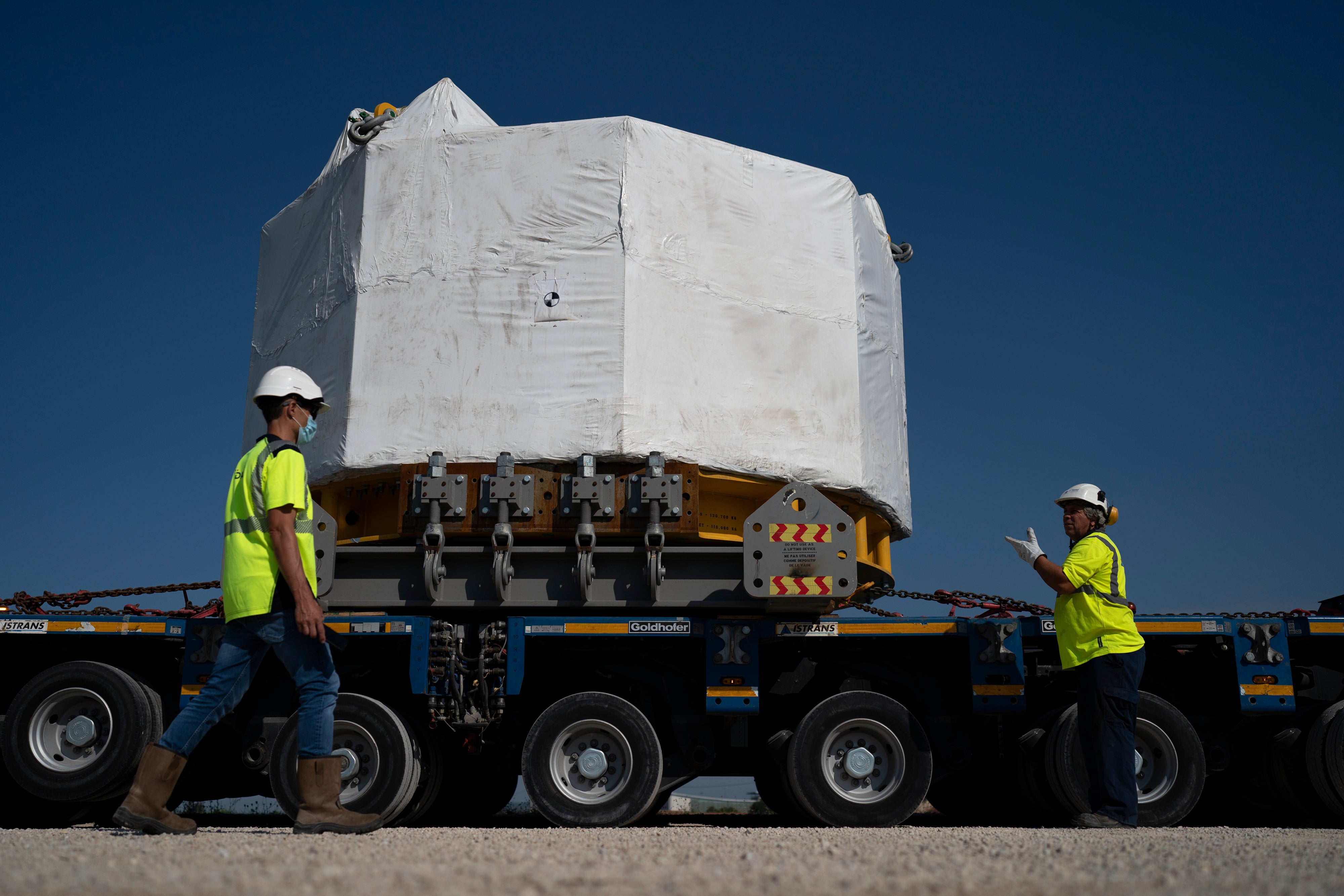
“That’s why I believe ITER will succeed,” Smith says. “It’s based on stuff that we now know how to do better, and the device is capable of doing that better stuff.”
ITER will not actually transform the energy it creates into usable electricity during its full-scale experiments in 2035, but the knowledge gained could inform the next generation of commercial fusion plants.
“ITER is the first step in that, but certainly not the last,” says Smith.
The key to living carbon-free?
At this point you can be forgiven for wondering, what about Chernobyl? What about Fukushima? We’re expected to pin our hopes on nuclear power, again? ITER is a different beast, though not without its own drawbacks. All functioning modern nuclear plants, and almost all nuclear weapons, are powered by nuclear fission, the process of splitting atoms and releasing energy.

ITER, meanwhile, will be powered by fusion, a much safer process. The main sources of fuel are to be found in seawater and other nuclear reactors, and will generate an inert gas, helium, as the main waste product. Such fusion projects hold no risk of a runaway nuclear event, according to the programme.
Groups ranging from the European Commission, the EU’s executive, to the Nature Conservancy have cited nuclear energy as a tool to get the world to a carbon-free future.
“My viewpoint is that it will end up being a critical component amongst a bunch of others,” says Todd Allen, a professor of nuclear engineering at the University of Michigan and director of the school’s Fastest Path to Zero climate centre. “As an engineer, I don’t think there’s a perfect energy source that does everything the way we want it to. Inherently, like everything, you’re going to end up coming against some limits, whether they’re cost limits or social limits.”
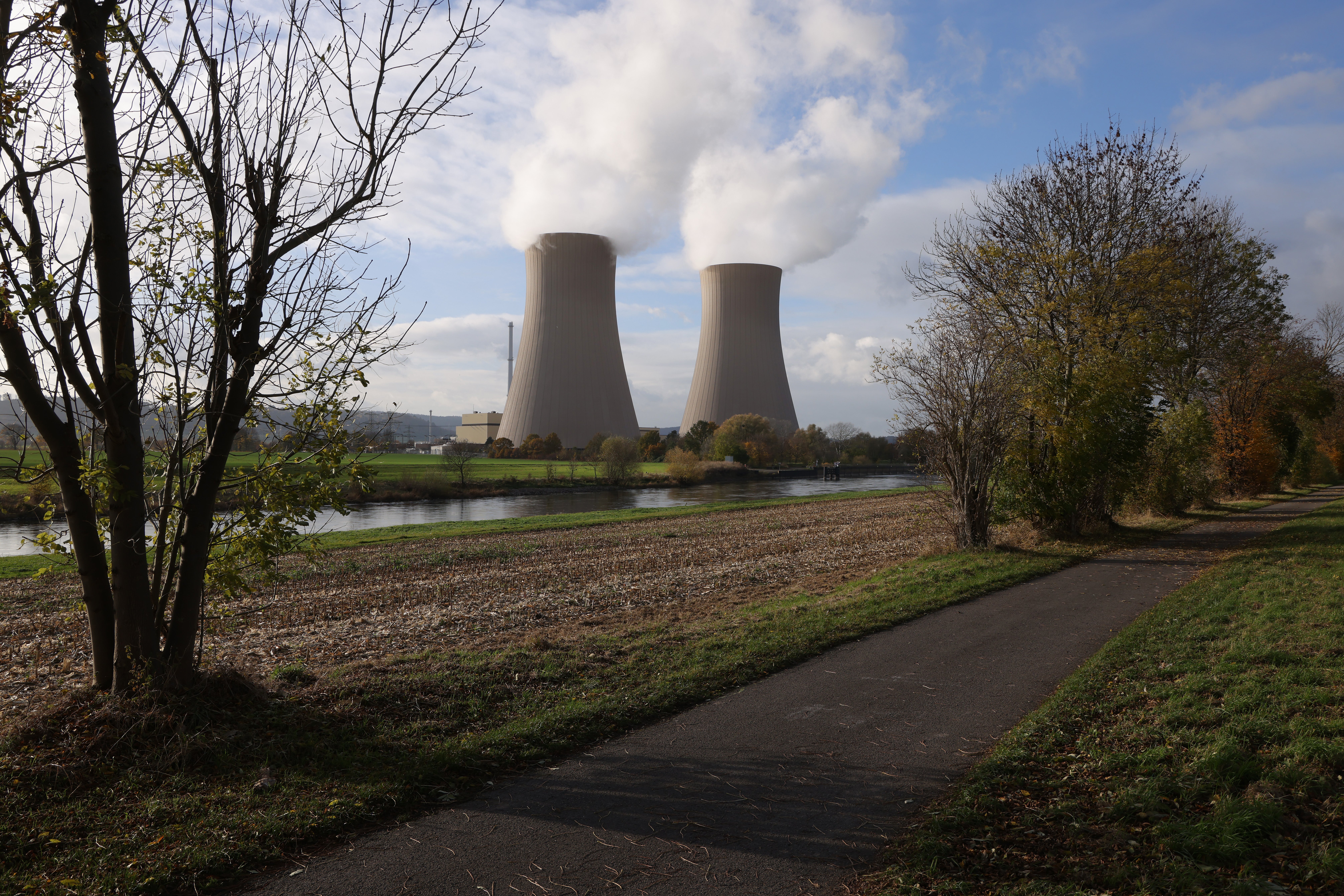
Since the discovery of nuclear power in the 1930s, support for nuclear energy and fusion has waxed and waned, becoming a priority after the Second World War, then amid the oil shocks of the 1970s, before losing support in the 1990s after deregulation and Chernobyl vastly lowered the public appetite for costly nuclear programmes. The climate crisis is the latest shift to have instigated a return to the nuclear question.
In addition to ITER, private companies are leaping into the nuclear race, from the Bill Gates-backed TerraPower to a host of companies experimenting with various fusion processes, mini-reactors, and even planning nuclear devices hooked up directly to industrial plants and bitcoin-mining operations.
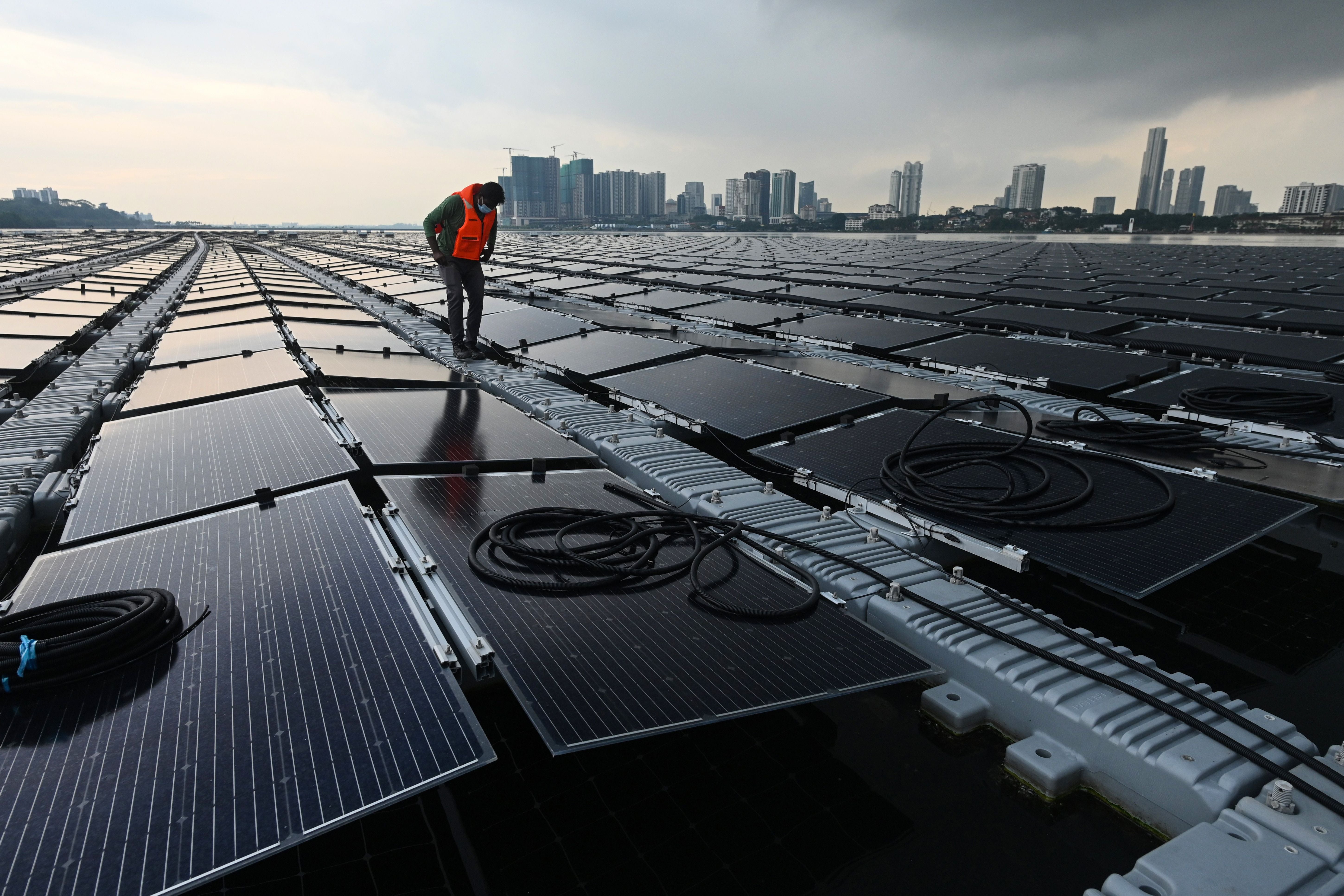
“For my generation, it was fear of weapons that influenced people’s view of nuclear. In this generation, it’s climate change,” Allen says. “I don’t know in the end if these are the technologies that catch fire or not. It’s just interesting to me because they’re the first demos of new ideas in half a century. I think there is a lot of interest and potential.”
Overpromising and underdelivering
There is a joke in nuclear circles that fusion operates on the physical law of “conservation of difficulty” – basically, no matter how much the field develops, it will always be torturously difficult to manage. There’s another joke regarding nuclear fusion – that the big breakthrough is always 20 to 30 years away, as it has been since the 1950s. General Atomics’ John Smith was writing papers about nuclear fusion while at university, he tells me, and the world has still not found a way to make it work decades later.
For Jan Haverkamp, an energy expert at Greenpeace, nuclear has a record of overpromising, underdelivering, and costing astronomical sums of money – precisely the wrong combination when the world needs a rapid, reliable transition to green energy. According to modelling from Greenpeace and others, the world could reach a fully renewable energy system without nuclear by 2050.
“We’ve never been in principle against any technology, but it is very clear, every time you start calculating, that the moment you introduce nuclear, the costs are going up and the speed of change is going down. That’s exactly what we can’t afford now as climate change is becoming ever more real. If you start talking about nuclear at this moment, either you’re following a fad or you’re trying to divert the attention from what really needs to be done.”
ITER, to his mind, is closer to “the search for the holy grail” than a solution that could make a meaningful difference before the climate crisis devastates large parts of the world.
Estimates suggest that at least $22bn has been spent on ITER, but others have said its size and complexity render a final price tag “incalculable”.
And if ITER is to be the world’s great energy hope, the project has a dismal record of management so far.
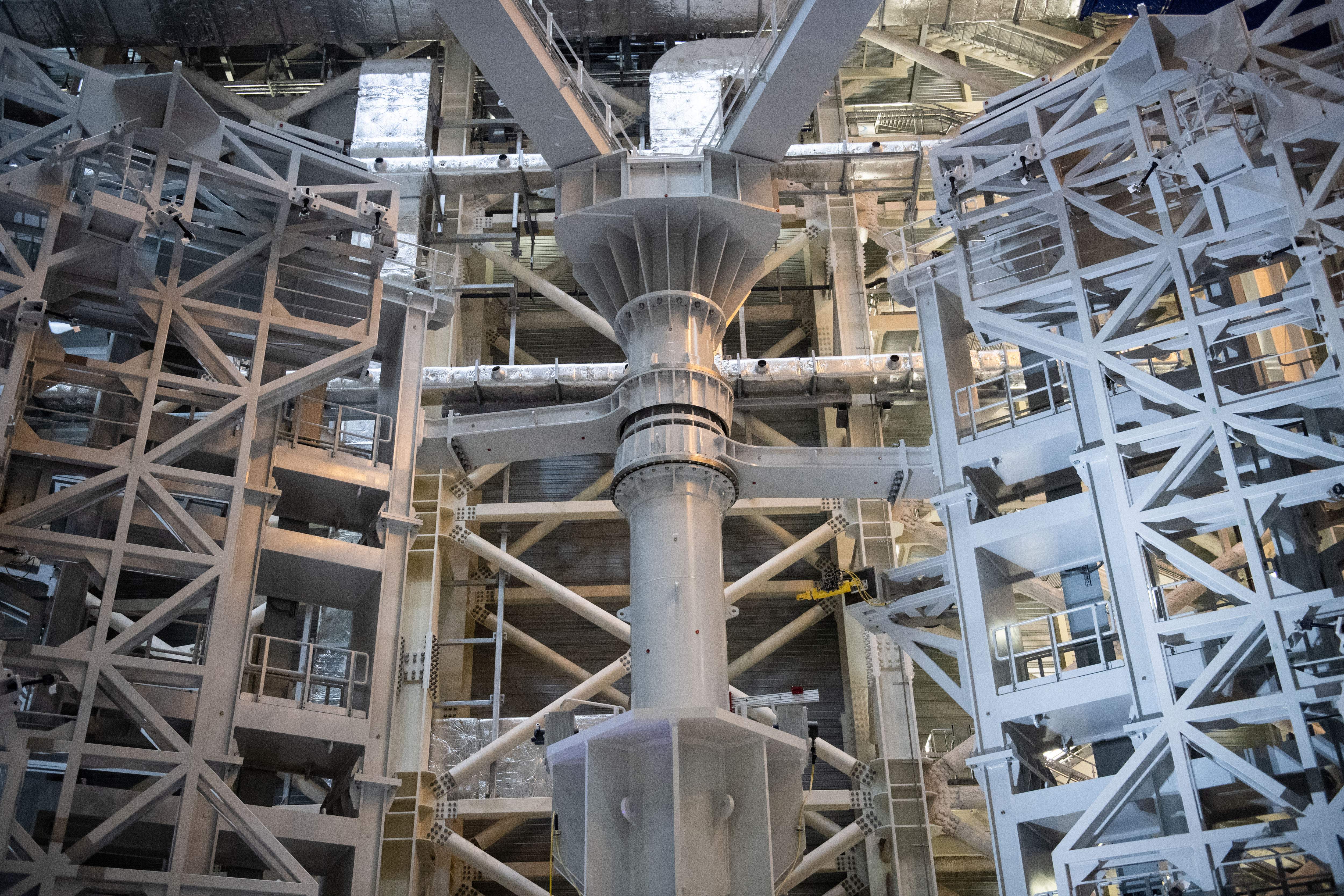
Even before the pandemic, the project was running at least 10 years behind schedule and billions over budget. A 2013 review of ITER management called its structure “ill-defined and poorly implemented”, leading to a large-scale reorganisation.
In 2015, ITER’s director-general, Bernard Bigot, wrote that previous generations of ITER leadership had “proved incapable of solving issues and responding to the project’s needs, so accumulating technical difficulties have led to stalemates, misunderstandings and tension between staff around the world”.
However, any complaints of cost overrun must be put into context. In 2021, the US spent around $670m (£492m) on nuclear fusion, including its support for ITER. That same year, it spent $650bn (£470bn) on fossil fuel subsidies.
Disagreements may rage about the precise form a shift to clean energy will take, but if we have a hope of surviving the climate crisis, it will look something like ITER: international, sustained, cooperative, ambitious. In a world riven by competition and shortsightedness, this sort of thinking is its own holy grail. And in a warehouse in California, a compound in France, factory lines in Japan, and many more sites of quiet, enduring scientific commitment, we are being shown how to find it.
Join our commenting forum
Join thought-provoking conversations, follow other Independent readers and see their replies
Comments